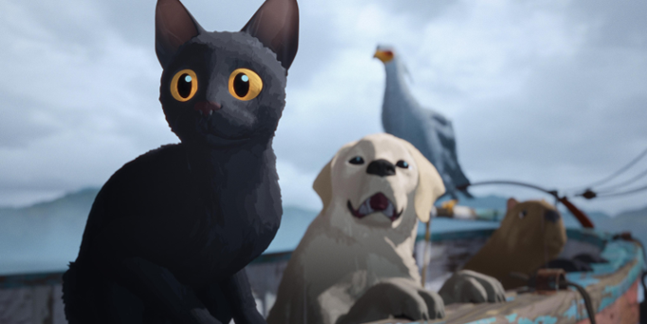
I've always been a big fan of open source software because it's free (as in freedom) and has plenty of potential to grow in ways that proprietary software could never.
Having said that, I was surprised to find out that 2025's Oscar-winning animated short movie “Flow” (directed by Gints Zilbalodis) was made using Blender, a popular open source 3D software.
For those of us who have watched Blender grow all these years, seeing it help create such a remarkable movie is a win for the open source community as a whole.
For those who don’t know about Blender. It is a free, open source 3D creation software that can be used for modeling, animation, rendering, and compositing. It has gained popularity in both indie and professional circles, with its role in helping Flow win an Oscar once again proving its status as a powerful 3D creation suite.
The Importance of Open Source Software in the Industry

When I first started using Blender to create content, it was an exciting moment for me, as this was something I had never done before.
Although, in its early days, Blender was mainly used by hobbyists and small creators, it has since grown significantly in terms of functionality and industry recognition. Thanks to increasing adoption by prominent studios and professionals, it's no surprise Blender played a key role in an Oscar-winning project.
The satisfaction of Flow winning an Oscar was amplified by the fact that it wasn't made like some obscure casual project but with top-notch animation. This achievement highlights the growing democratization of creative software, providing artists with access to professional-grade tools without the need for costly licenses.
Blender’s Role in Flow’s Creation
Source: Blender
Flow tells a beautiful and visually stunning story about a cat's journey through different landscapes, such as forests and a half-submerged city.
One of the toughest parts of making Flow was creating realistic water simulations, which required detailed fluid dynamics and visual effects. That is where Blender's fluid simulation features came in. Its advanced particle systems, physics simulations, and shading tools were key to bringing Flow's watery world to life.
Beyond that, Blender's other extensive features enabled the team to manage all aspects of modeling, sculpting, rigging, animation, and compositing within one program, streamlining their workflow and ensuring consistency throughout the movie.
The Impact of Blender and Open Source in Winning an Oscar

Flow winning the Oscar for Best Animated Feature is a huge win for the open source community. A movie created with Blender getting such recognition highlights that open source tools can compete with proprietary tools like Autodesk Maya.
For open source advocates, this Oscar win validates the notion that creativity, talent, and vision matter more than the monetary investment poured into pricey closed source tools.
Whether you are working on an indie project, a small studio production, or a large-scale production, it's clear that exceptional work can be achieved with the right tools.
Blender has proven it can be used to produce professional, studio-quality work. The success of Flow will inspire many creators who don't have access to expensive 3D creation software for pursuing their creative ideas.
I'm excited to see how Blender and other open source tools shape the future of animation. As more creators use such open source tools, we can look forward to a world where anyone can create high-quality content without spending money on expensive software.
- Even the biggest players in the Linux world don't care about desktop Linux users. We do.
- We don't put informational content behind paywall. Your support keeps it open for everyone. Think of it like 'pay it forward'.
- Don't like ads? With the Plus membership, you get an ad-free reading experience.
- When millions of AI-generated content is being published daily, you read and learn from real human Linux users.
- It costs just $2 a month, less than the cost of your favorite burger.
Become a Plus Member today and join over 300 people in supporting our work.









